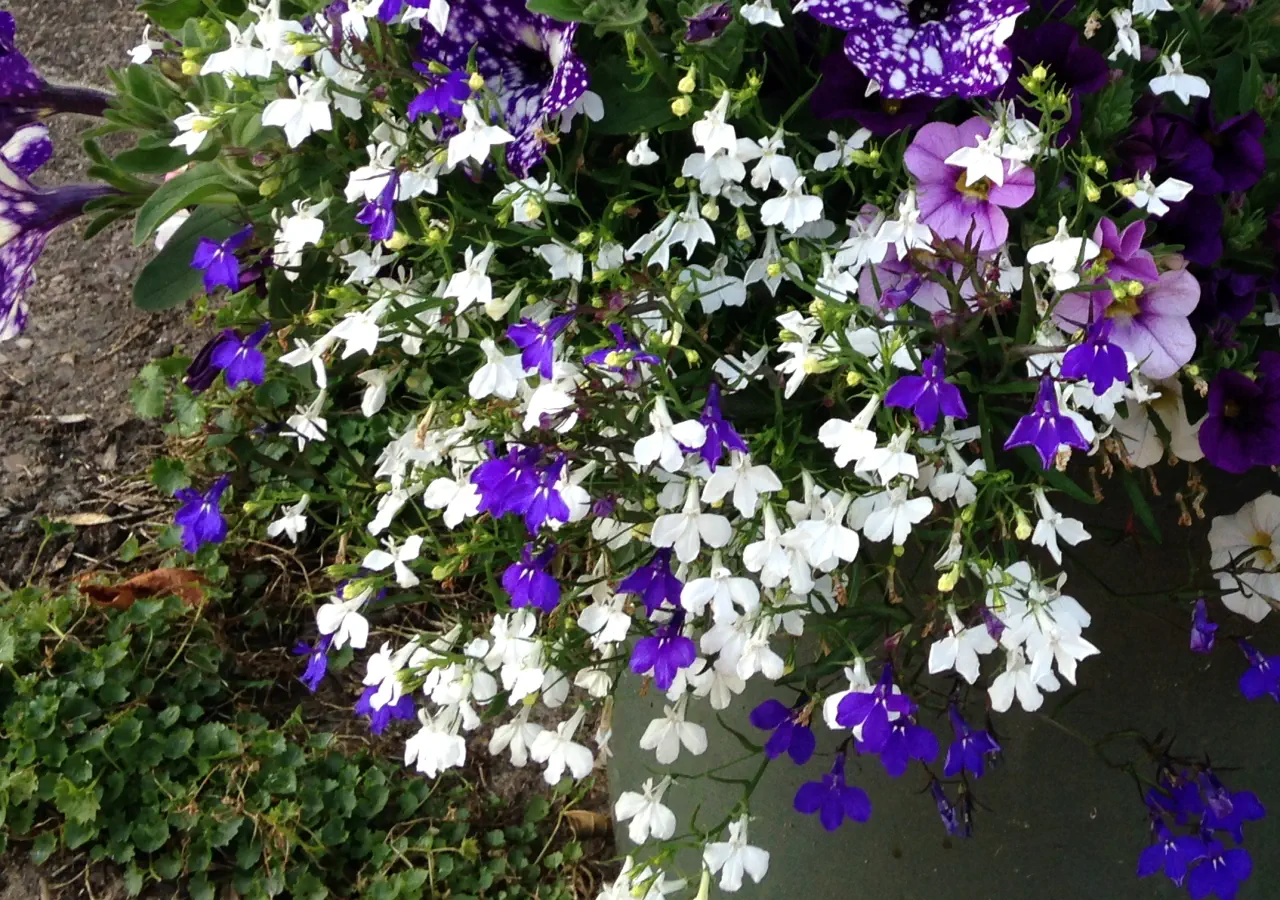Trailing Lobelia - The Hanging Basket Essential

If you’re looking for a plant that brings effortless charm to your garden, trailing lobelia (Lobelia erinus) is a fantastic choice. Loved for its dainty, cascading flowers and versatile nature, it’s a staple in hanging baskets, containers, and borders. Whether you’re a seasoned gardener or just starting out, trailing lobelia is easy to grow and delivers months of vibrant colour.
Here’s everything you need to know about this classic favourite, from its history and varieties to planting tips and creative ideas for your garden.
What is Trailing Lobelia?
Trailing lobelia is a low-growing, annual plant native to South Africa. It’s famous for its profusion of tiny, delicate flowers in shades of blue, purple, white, and pink, often with a contrasting white or yellow centre.
Unlike its upright relatives, trailing lobelia has a cascading habit, making it ideal for softening the edges of planters or creating lush, flowing displays in hanging baskets. Blooming from late spring to early autumn, it’s a reliable way to add colour to your garden for months on end.
Why Choose Trailing Lobelia?
1. Elegant Cascading Growth
Trailing lobelia creates a graceful, flowing effect as it spills over the edges of containers or borders.
2. Vibrant Colour Options
From vivid royal blues to soft pastel shades, there’s a lobelia to suit every garden style.
3. Long-Lasting Blooms
With flowers lasting well into autumn, trailing lobelia keeps your garden looking cheerful and fresh.
4. Low Maintenance
This easy-going plant doesn’t demand much attention, making it perfect for busy gardeners.
5. Pollinator Appeal
Bees love lobelia’s nectar-rich flowers, making it a great choice for supporting wildlife.
Popular Varieties of Trailing Lobelia
There’s a wide range of trailing lobelia varieties to choose from, each offering something special:
- Lobelia ‘Cascade Blue’: A classic with rich blue flowers and a bright white eye.
- Lobelia ‘Regatta Lilac’: Soft lilac blooms that work beautifully in pastel colour schemes.
- Lobelia ‘Sapphire’: Intense blue flowers with a striking white centre—a real showstopper.
- Lobelia ‘White Lady’: Pure white flowers for a clean, elegant look.
- Lobelia ‘Trailing Mixed’: A vibrant mix of colours, perfect for bold, cheerful displays.
Most varieties are easy to find in garden centres or can be grown from seed if you’re feeling adventurous.
How to Grow and Care for Trailing Lobelia
Trailing lobelia is straightforward to grow and rewards you with a cascade of blooms for minimal effort.
Light
It thrives in full sun but will tolerate partial shade, especially in hotter parts of the UK. Aim for at least 4–6 hours of sunlight a day.
Soil
Well-draining soil is key. If you’re planting in containers, use a quality compost with good drainage. Adding a bit of grit or sand can help.
Watering
Lobelia likes its soil consistently moist but not soggy. Hanging baskets and containers may need daily watering during hot weather.
Feeding
Feed with a balanced liquid fertiliser every couple of weeks during the growing season to keep the blooms coming.
Deadheading
Although not strictly necessary, deadheading spent flowers and trimming back leggy growth can encourage fresh blooms and keep plants looking tidy.
Frost Sensitivity
As an annual, trailing lobelia won’t survive frost. However, it flowers for months and will last well into autumn with the right care.
Planting Tips for Trailing Lobelia
- When to Plant: Sow seeds indoors in late winter or early spring, or plant nursery-bought lobelia outdoors after the last frost.
- Spacing: Space plants 10–15 cm apart to allow them to spread and trail.
- Companions: Pair trailing lobelia with upright plants like petunias, geraniums, or marigolds to create dynamic displays.
Creative Ways to Use Trailing Lobelia
1. Hanging Baskets
A classic choice, trailing lobelia adds elegance to hanging baskets. Pair it with trailing ivy or fuchsias for a lush, flowing look.
2. Window Boxes
Let lobelia spill over the sides of window boxes for a soft, romantic effect. Combine with upright plants like snapdragons for contrast.
3. Mixed Containers
Use lobelia as the “spiller” in the popular “thriller, filler, spiller” method. It pairs beautifully with bold central plants like salvias or cannas.
4. Border Edging
Plant trailing lobelia along the edges of borders or pathways for a pretty, low-growing feature.
5. Seasonal Displays
Mass-plant lobelia in contrasting colours to create striking seasonal displays in raised beds or planters.
Common Problems and Tips
Trailing lobelia is generally trouble-free, but here are a few issues to watch out for:
- Yellowing Leaves: Often a sign of overwatering or poor drainage. Check that containers have good drainage holes.
- Leggy Growth: If plants start looking spindly, they may need more sunlight. A quick trim can also help them bounce back.
- Pests: Aphids and whiteflies occasionally appear. Treat infestations with insecticidal soap or a strong spray of water.
- Powdery Mildew: This can develop in damp, humid conditions. Improve air circulation and avoid watering leaves directly.
Fun Facts About Trailing Lobelia
- Historic Name: Lobelia is named after Matthias de l’Obel, a Flemish botanist from the 16th century.
- Victorian Favourite: Lobelia was a go-to plant for formal Victorian bedding schemes.
- Eco-Friendly Choice: Its nectar-rich flowers are a boon for pollinators, particularly bees.
Why Grow Trailing Lobelia?
Trailing lobelia is a firm favourite for good reason. Its cascading habit, vibrant blooms, and extended flowering season make it a versatile addition to any garden. Whether you’re creating lush hanging baskets, brightening up window boxes, or adding a soft edge to borders, it’s a plant that delivers beauty with minimal effort.
Easy to grow and endlessly rewarding, trailing lobelia is a true staple for UK gardeners. Give it a go this year, and enjoy the charm it brings to your outdoor space.
